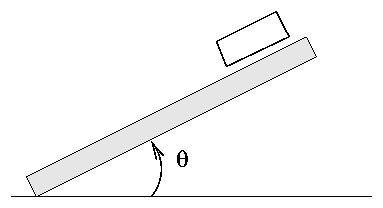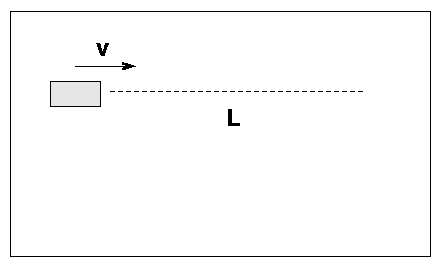
 Copyright © Michael Richmond.
This work is licensed under a Creative Commons License.
Copyright © Michael Richmond.
This work is licensed under a Creative Commons License.
Your job: measure both the static and kinetic coefficients of friction between a whiteboard and an eraser. You must turn in a report which contains

Place an eraser on your whiteboard. Tilt the board until the eraser just starts to slip.
What is the coefficient of static friction between eraser and board? (Hint: make a table showing all forces acting on the eraser).

Place the whiteboard flat on the table. Give the eraser some known kinetic energy by sliding it at a measured speed v. Explain how you do this!
Release the eraser and let it skid to a halt; measure the distance L between the release point and its final resting place.
Use the conservation of energy to figure out the size of the friction force between eraser and board; then calculate the coefficient of kinetic friction between eraser and board.
 Copyright © Michael Richmond.
This work is licensed under a Creative Commons License.
Copyright © Michael Richmond.
This work is licensed under a Creative Commons License.